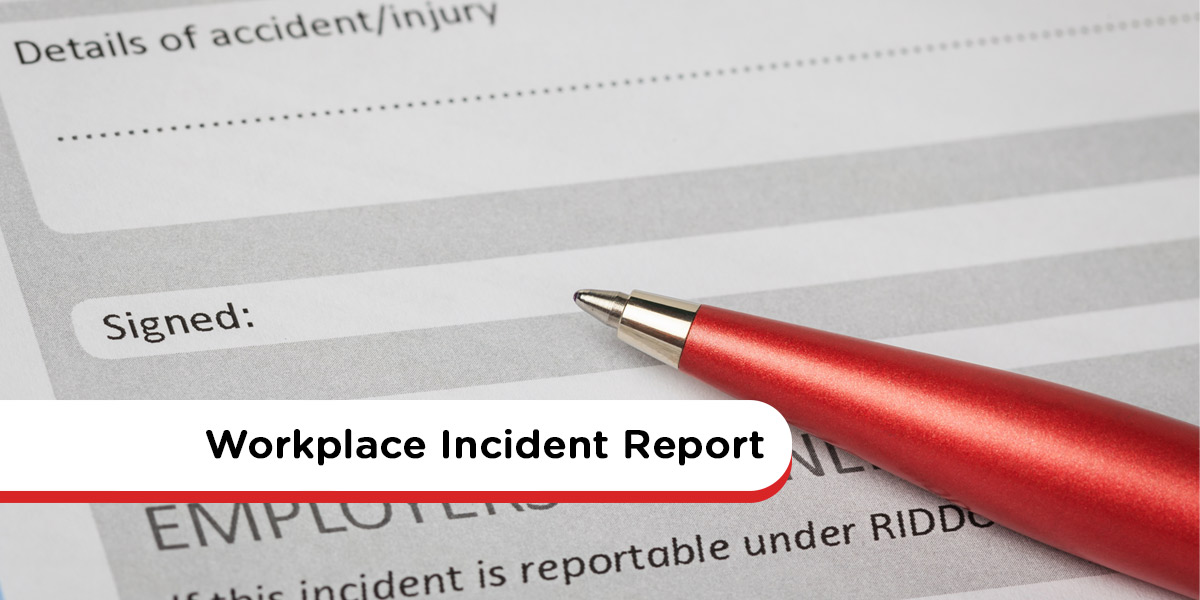
Your New Intranet Starts Here
Streamline communication, boost collaboration, and empower your team with MyHub's intuitive intranet solution.
Book a live demo now and experience the difference.
Take a Quick TourIn a perfect world, you would never need a workplace incident report sample. However, accidents and occupational health and safety incidents can happen in even the most safety-conscious organizations. Whether it’s an injury, near miss, property damage, or a security breach, a well-documented incident report is essential for capturing key details and managing risks effectively.
This guide offers a detailed, step-by-step overview of the incident reporting process. By the end, you’ll have a solid framework to handle workplace incidents confidently and prevent similar occurrences in the future.
Plus, we’ve included a free downloadable employee incident report template to help you get started.
Ready to build a safer workplace? Let’s dive in.
What Is An Incident Report In The Workplace?
An incident report form is a formal document used to record any workplace accident, injury, illness, near miss, or security issue. It ensures that key facts are captured promptly and accurately.
Even seemingly minor events, such as a small slip or close call, should be documented. Ideally, the report should be filled out immediately or shortly after the event to preserve critical details.
All reports should be stored in a centralized log and reviewed regularly. This supports both compliance with occupational safety regulations and continuous workplace improvement.
What Is The Purpose Of An Incident Report?
Employers have a legal and ethical duty to maintain a safe working environment. But incident reporting is about more than just compliance. Thorough documentation allows businesses to identify root causes, improve systems, and eliminate hazards.
Here are key reasons why reporting workplace incidents is vital:
Prevention
Early detection of risks prevents future, more severe accidents. Incident reports help identify and fix safety issues before they escalate.
Employee Wellbeing
Incident reporting systems show employees that their safety matters. When workers see employers taking action, it boosts morale and encourages a culture of accountability.
Save Time And Resources
Accurate reports reduce legal, insurance, and compensation costs. Timely documentation helps prevent larger claims, investigations, and damage to your brand reputation.
Promote A Robust Safety Culture
Consistent use of incident reports reinforces health and safety standards across the organization. Employees stay aware of expectations and hazards are addressed proactively.
Improved Oversight
Management can track safety trends, uncover root causes, and identify training gaps. For instance, frequent PPE-related accidents may highlight a need for refresher courses on equipment usage.
What Does An Incident Report Include?
The best incident reports are concise, complete, and written close to the time of the event. A well-structured form should gather essential information without overwhelming the user.
Here are the must-have fields in your incident report form:
- Type of incident (e.g., injury, near miss, property damage)
- Exact location of the event
- Names and contact details of involved parties and witnesses
- Clear statement of facts (what happened, how, when, and why)
- Environmental or situational factors
- Details of injuries and medical response
- Damage assessment of property or equipment
How Do I Write An Incident Report?
Now that you know what to include, let’s explore some best practices to create an effective and user-friendly incident report form:
- Brand your form with your logo and colors to ensure it’s clearly associated with your organization.
- Use structured sections and boxes to improve usability and reduce skipped fields.
- Provide short descriptions or tooltips for each field to guide the user in filling it out properly.
- Encourage evidence, ask for photo or video attachments to verify site conditions or injuries.
- Involve staff in development. Use focus groups to test draft forms and incorporate feedback to improve functionality and user adoption.
What Are The 4 Types Of Incident Report?
Incident report types may vary by industry, but these four categories are among the most common across workplaces:
- Near Miss Incident Report: A near miss report documents an event that could have caused harm but didn’t, like slipping on a wet floor but regaining balance. Reporting these helps eliminate risks before real accidents occur.
- Injury And Lost Time Report: Used when a workplace injury results in missed workdays. Tracking lost time injuries helps measure incident severity and productivity impact.
- Exposure Incident Report: These reports cover incidents involving hazardous exposure to chemicals, fumes, or infectious substances. They are vital for evaluating workplace safety procedures and risks.
- Sentinel Event Report: This is the most serious type of report, covering fatal or permanently disabling events. Sentinel event reports require in-depth investigations to uncover systemic failures and implement major changes.
Incident Report Form Sample
Templates streamline the reporting process and help ensure no critical details are missed. They also support your compliance requirements and reinforce your organization’s commitment to safety.
Our free incident report form template is based on best practices and includes all essential fields. You can use it as-is or customize it for your business.
PDF Download: Incident Report Form PDF
Word Document Download: Incident Report Form Word Document
Incident Reporting: Next Steps
Submitting the report is just the beginning. Post-incident follow-up is crucial to ensure reports lead to actionable safety improvements.
Analyze And Monitor Incident Data
Review reports regularly to spot patterns and identify recurring risks. Use insights to update safety protocols and prevent future incidents.
Train Employees
Ensure staff know how to report incidents properly and understand why it’s important. Use data insights to create targeted training programs that close safety gaps.
Implement Corrective Action
Use the findings from reports to take meaningful steps. Here are examples of corrective actions you might take:
- Update or replace PPE and safety gear
- Schedule preventative maintenance on tools and machinery
- Redesign workflows or job roles to reduce risks
- Deliver hazard management training for at-risk staff
Workplace Incident Report: Final Thoughts
According to the latest data from the Bureau of Labor Statistics (BLS), there were 2.6 million non-fatal workplace injuries reported in the private sector in 2021. Industries with the highest incident rates included healthcare, retail, and manufacturing.
In addition, the BLS also reported over 5,000 fatal workplace injuries in the same year. The sectors most affected were construction, warehousing, and transportation. Even more concerning, fatal incidents rose by nearly 9% compared to the previous year, despite the disruptions caused by the Covid-19 pandemic.
These sobering statistics highlight the ongoing need for effective workplace safety practices. Both fatal and non-fatal incidents remain far too common across industries. That’s why implementing a solid incident reporting system is a critical first step toward protecting your workforce and reducing risk.
Don’t wait for an accident to take action. Download your free employee incident report template today and begin building a safer, more compliant workplace.
About MyHub
MyHub Intranet is a trusted provider of cloud-based intranet software for organizations worldwide. Our intuitive platform helps companies improve internal communication, streamline processes, and enhance employee engagement, all within a secure digital workspace.
Rated highly on independent review sites, MyHub supports businesses of all sizes in creating safer, more connected workplaces. Book a free demo or start your 14-day free trial today. And don’t forget to explore our blog for more best-practice workplace insights on collaboration, compliance, and communication.
FAQ Section
What is a workplace incident report and why is it important?
A report records details of workplace events—accidents, injuries, near misses, property damage, or security incidents—to enable investigation, root cause analysis, corrective action, and regulatory compliance.
What should an incident report form include?
Essential fields comprise event type, location, involved persons and witnesses, environmental context, a factual incident description, any injuries or damage, treatment steps, and optional media attachments like photos or videos .
What happens after an incident report is submitted?
Submitted reports feed into a central register for analysis. Management reviews patterns, identifies systemic issues, and implements training, improvements, or procedural changes. The goal is preventing future incidents and fostering a safety-first culture.



